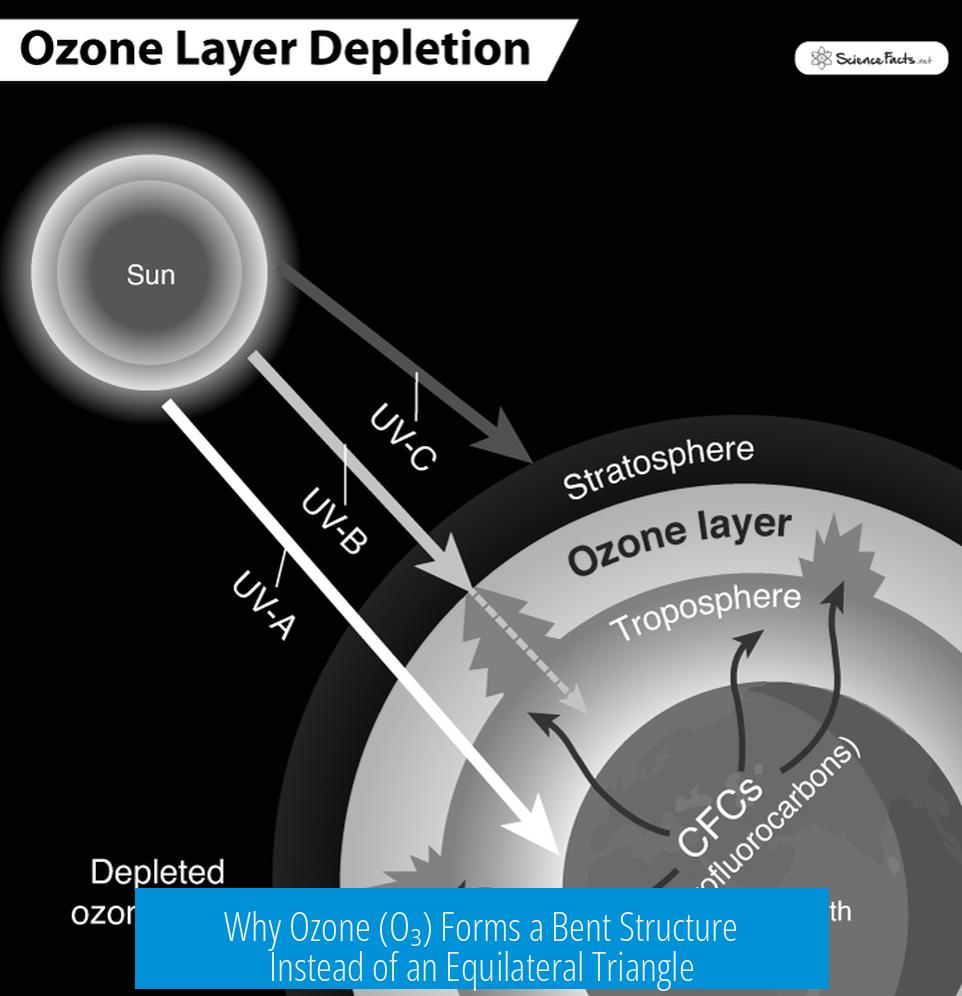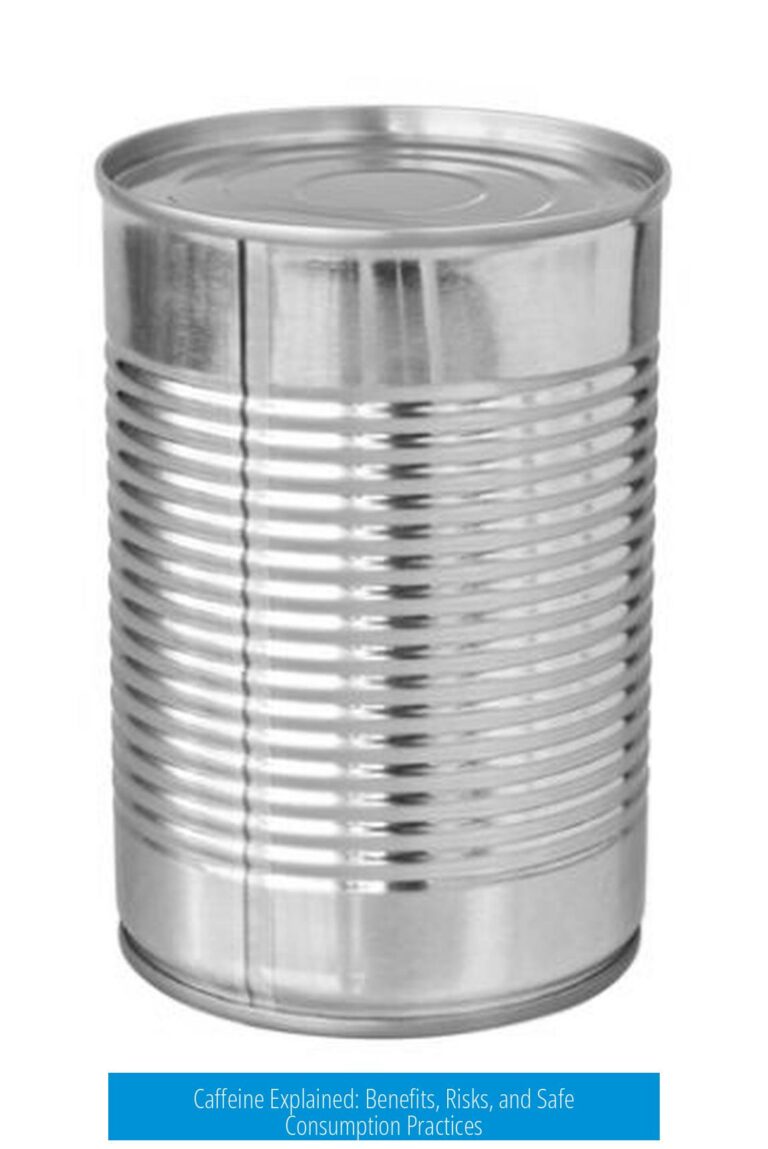Why Does Ozone (O3) Not Form an Equilateral Triangle?
The reason ozone does not adopt an equilateral triangular shape lies in bond strain, lone pair repulsion, and molecular orbital interactions, which make the equilateral triangle structure energetically unfavorable and highly unstable compared to its bent geometry.
1. Molecular Geometry and Bond Angles in Ozone
Ozone features a bent molecular geometry with bond angles close to 117°. This shape arises because the central oxygen atom is sp2 hybridized, supporting bond angles near 120°. The structure results from two bonding electron pairs and one lone pair on the central oxygen, while each terminal oxygen also carries lone pairs.
Proposing an equilateral triangle would impose bond angles of 60°, dramatically smaller than the typical tetrahedral or trigonal planar angles favored by electron pairs.
- Electron pairs repel each other to maximize their separation, generally around 109.5° (tetrahedral) or 120° (trigonal planar).
- Decreasing bond angles to 60° sharply increases electron-electron repulsion, elevating molecular energy.
- In a cyclic ozone, the very small bond angle would cause excessive angular strain and destabilize bonds.
2. Lone Pair Repulsion and Electronic Effects
Lone pairs on oxygen atoms repel bonding pairs more strongly than bonding pairs repel each other. In ozone, lone pairs on the central and terminal oxygens influence the geometry:
- The central oxygen has two lone pairs and two bonding pairs, tending to form a tetrahedral electronic arrangement.
- Lone pairs occupy more space, pushing bonding pairs closer or further and favoring bent geometries rather than closed rings.
- In an equilateral triangle, lone pairs on each oxygen would be forced into unnatural proximity, increasing repulsion.
- Such repulsions destabilize the ring form, making the bent shape energetically preferred.
3. Bond Strain in Cyclic Ozone
Forming an equilateral triangular shape would require bond angles of 60°, which is highly strained for ozone due to:
- The sp3 or sp2 hybridized orbitals of oxygen usually favor bond angles near 109.5° or 120°, respectively.
- Bending bonds to 60° increases ring strain, commonly known as angular strain, destabilizing the molecule.
- Electrons confined to closer proximity suffer increased repulsion, elevating the total energy.
- Computational studies show cyclic ozone has approximately double the energy content of bent ozone, indicating less stability.
4. Molecular Orbital and Resonance Considerations
Ozone’s bonding cannot be fully explained by simple Lewis structures. Molecular Orbital (MO) theory indicates:
- The bonding involves delocalized π-electrons spread over the molecule.
- In the bent form, effective overlap of p orbitals allows stable resonance forms, distributing electron density.
- The hypothetical cyclic form suffers from poor orbital overlap, increasing antibonding character and molecular energy.
- The cyclic shape disrupts delocalization and resonance stabilization, leading to higher electronic energy.
5. Effect of Pseudo-Jahn-Teller Distortions
Symmetry breaking plays a crucial role in ozone’s structure:
- An equilateral triangular (D3h symmetry) ozone molecule would be highly symmetric but unstable.
- The pseudo-Jahn-Teller effect explains how low-lying excited states interact with the ground state, stabilizing lower symmetry structures.
- This effect causes ozone to distort from symmetrical triangular shapes to asymmetric, bent structures to lower energy.
- The bent form minimizes electron repulsion and lowers total molecular energy more effectively.
6. Entropy and Other Thermodynamic Factors
Besides enthalpy and electronic energy, entropy influences molecular stability:
- Cyclic molecules have fewer vibrational freedoms, reducing entropy.
- Bent ozone has higher entropy, contributing favorably to overall free energy.
- This additional entropy advantage further disfavors the cyclic triangular form.
7. Existence and Detection of Cyclic Ozone
While cyclic ozone is theoretically possible, it is rare and transient:
- It exists as a high-energy local minimum on the potential energy surface.
- Studies have detected cyclic ozone in specialized conditions, such as on MgO surfaces at high temperatures.
- Cyclic ozone is unstable and prone to decomposition, limiting its practical observation as a free molecule.
Summary of Key Points
- Ozone’s bent geometry results from bond angles optimized to reduce lone pair and electron-electron repulsion.
- An equilateral triangle with 60° bond angles causes extreme angular strain, destabilizing bonds.
- Lone pairs and electron clouds repel strongly, forcing the molecule into a less symmetric, lower-energy bent shape.
- Molecular orbital theory and resonance favor delocalized bonding in a bent structure rather than cyclic.
- The pseudo-Jahn-Teller effect drives distortion from symmetric triangular forms to bent geometry.
- Entropy considerations support the bent form due to greater molecular freedom.
- Cyclic ozone can form but is highly unstable and rarely observed in free form.





Leave a Comment